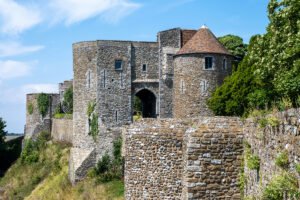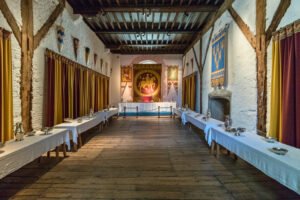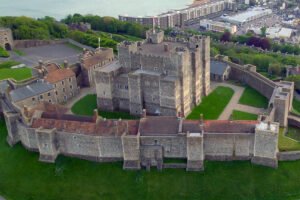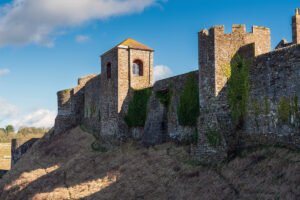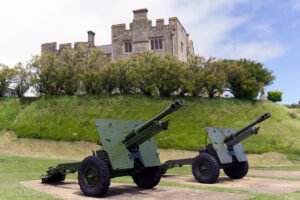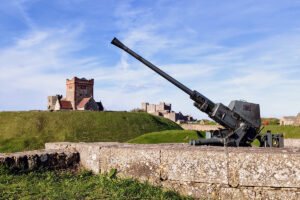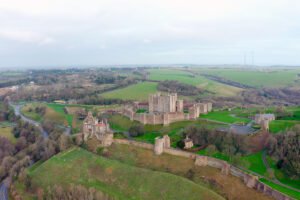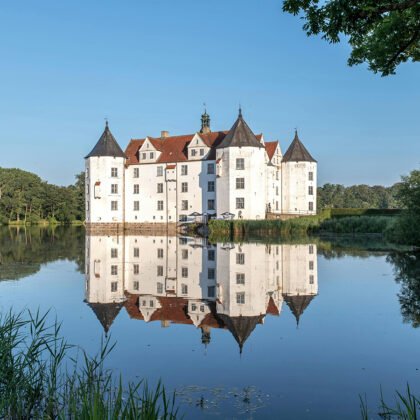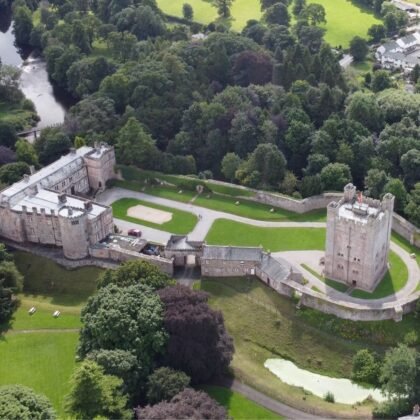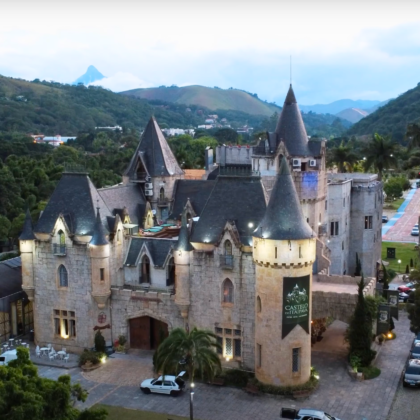Perched high on the White Cliffs, Dover Castle watches the English Channel at its narrowest point—hence its proud nickname, the “Key to England.” From a Roman lighthouse to medieval battlements and secret war tunnels, the site layers two millennia of defense into one dramatic headland. Come for sweeping sea views; stay for stories that stretch from knights to code names.
Quick Facts
📍 Location: Dover, Kent, England
🏗️ Construction Period: 11th–13th centuries (major works c. 1180–1200)
🏰 Architectural Style: Norman (Romanesque) military architecture
🎭 Famous For: The ‘Key to England’ nickname, 1216 siege, Great Tower keep, Roman lighthouse, WWII Dunkirk command tunnels
👑 Notable Figures: William the Conqueror, King Henry II, King John, Prince Louis of France, Admiral Bertram Ramsay
🏆 UNESCO Status: No
🌐 Official Website: https://www.english-heritage.org.uk/visit/places/dover-castle/
Map
Historical Context
Dover’s headland has been fortified since the Iron Age, but its story leaps to life with a 1st‑century Roman lighthouse and the nearby Saxon church of St Mary in Castro. After 1066, William the Conqueror raised a motte-and-bailey here; a century later, Henry II turned the site into a powerful stone fortress-palace crowned by the Great Tower. In 1216, the castle withstood a fierce siege by Prince Louis of France. Its defenses evolved with gunpowder, and deep tunnels were dug in the 18th–19th centuries. In 1940, Admiral Bertram Ramsay directed the Dunkirk evacuation from these tunnels, later adapted as a hospital and, in the Cold War, a government bunker.
Gallery
Visiting Information
🗓️ Best Time to Visit: April, May, late September, and October
🗺️ Location Perks: The castle crowns the iconic White Cliffs, offering panoramic Channel views and ferry traffic shimmering below. Canterbury’s UNESCO-listed cathedral and historic streets lie a short train ride away.
⏳ Estimated Visit Duration: Plan to spend 3–5 hours exploring the castle, its grounds, and the wartime tunnels.
💡 Visiting tips: Reserve a tunnels tour ahead of time—slots fill quickly, especially on weekends. Wear sturdy shoes for steep passages and bring a windproof layer for the ramparts.



